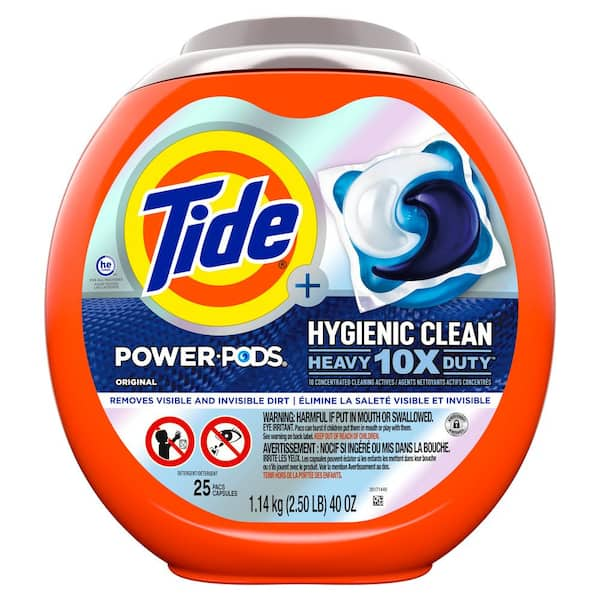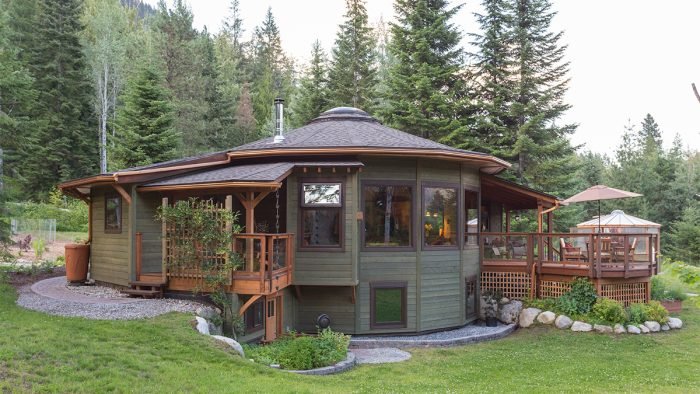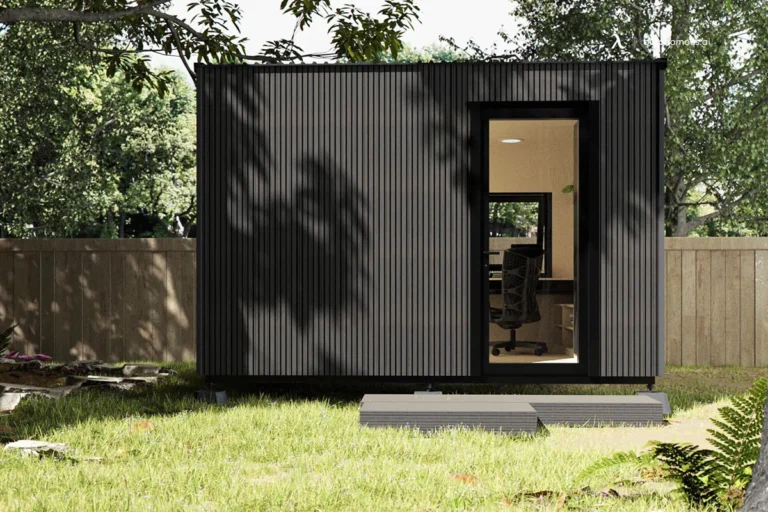How Many Pods for 2600 Sq Ft House: Optimal Number!
You typically need 2-3 moving pods for a 2600 sq ft house. The exact number depends on your belongings.
Moving a 2600 sq ft house can be a daunting task. Proper planning and the right number of moving pods are essential. Pods offer flexibility and convenience for storing and transporting your items. They come in various sizes to accommodate different household needs.
Assess the volume of your belongings to determine the appropriate number of pods. Overestimating can lead to higher costs, while underestimating may cause logistical issues. It’s crucial to strike a balance to ensure a smooth moving process. Researching and consulting with moving pod companies can provide additional guidance. Proper organization can make your move efficient and stress-free.

Credit: www.workdesign.com
Introduction To Smart Home Pods
Smart home pods are revolutionizing modern living. These devices make homes more efficient and connected. They control lights, security systems, and even thermostats. For a 2600 sq ft house, the right number of pods ensures smooth functionality.
The Role Of Pods In Modern Homes
Smart home pods serve as the brain of a smart home system. They connect various devices and allow seamless control. Imagine turning off lights or adjusting the thermostat with just your voice. This convenience enhances daily living.
These pods also improve home security. They can be integrated with cameras and alarms. You can monitor your home from anywhere. This peace of mind is invaluable for homeowners.
Factors Impacting Pod Quantity
Several factors determine how many pods you need for a 2600 sq ft house. One important factor is the number of rooms. More rooms generally require more pods. Each pod can cover a specific area effectively.
The layout of the house also matters. An open floor plan might need fewer pods. In contrast, a house with many walls and obstructions could need more pods for better coverage.
Consider the type of devices you plan to connect. More devices mean more pods for optimal performance. Think about smart lights, security cameras, and thermostats.
| Factor | Impact on Pod Quantity |
|---|---|
| Number of Rooms | More rooms = More pods |
| House Layout | Open plan = Fewer pods; Many walls = More pods |
| Type of Devices | More devices = More pods |
By understanding these factors, you can determine the right number of pods. This ensures your smart home system works efficiently.
Assessing Your Space
To determine the number of pods for a 2600 sq ft house, you need to assess your space. This involves measuring your home size and understanding room acoustics. Accurate measurements and acoustics ensure optimal pod placement.
Measuring Home Size
Start by measuring each room in your house. Use a tape measure or a digital measuring tool. Record the length and width of each room.
| Room | Length (ft) | Width (ft) | Area (sq ft) |
|---|---|---|---|
| Living Room | 20 | 15 | 300 |
| Kitchen | 15 | 10 | 150 |
| Bedroom 1 | 12 | 12 | 144 |
| Bedroom 2 | 14 | 12 | 168 |
Calculate the total area by adding up each room’s area. Ensure the total matches your home’s size.
Understanding Room Acoustics
Room acoustics play a key role in pod placement. Different materials affect sound differently. Carpeted rooms absorb sound, while hardwood floors reflect it.
- Carpeted Rooms: Absorb sound, require fewer pods.
- Hardwood Floors: Reflect sound, may need more pods.
Consider furniture and decorations. Heavy drapes and furniture absorb sound. Minimalist rooms may reflect sound.
Conduct a simple clap test. Clap your hands in each room and listen for echoes. More echoes mean more pods might be needed.
By measuring your home size and understanding room acoustics, you can determine the optimal number of pods for your 2600 sq ft house.
Pod Placement Strategies
Choosing the right pod placement for a 2600 sq ft house is crucial. It ensures a strong and consistent Wi-Fi signal throughout the home. Strategic placement can eliminate dead zones and optimize performance.
Central Vs. Peripheral Placement
Central placement involves positioning the main pod in the heart of your home. This allows the signal to spread evenly in all directions. Central placement is ideal for open floor plans.
Peripheral placement means placing pods along the edges of your house. This strategy is beneficial for homes with multiple floors or many rooms. Peripheral placement can help cover areas far from the main pod.
| Central Placement | Peripheral Placement |
|---|---|
| Best for open spaces | Best for multi-room homes |
| Signal spreads evenly | Targets distant areas |
| Easy to manage | Requires more pods |
Avoiding Signal Obstructions
Avoid placing pods near metal objects like refrigerators or microwaves. These objects can block Wi-Fi signals. Keep pods away from thick walls and floors. They can also reduce signal strength.
Maintain a clear line of sight between pods when possible. This helps the signal travel without interruptions. If possible, elevate pods off the ground. This can improve signal distribution.
- Keep pods away from electronics
- Place pods in open areas
- Avoid corners and enclosed spaces
Use these strategies to ensure a strong Wi-Fi signal in every corner of your 2600 sq ft house.

Credit: www.homedepot.com
Calculating Pod Density
Understanding how many pods you need for a 2600 sq ft house can be tricky. This guide will help you calculate the right pod density for your home. By considering square footage and room-specific needs, you can ensure optimal coverage and performance.
Pods Per Square Footage
The first step is to determine the number of pods per square foot. A typical pod covers around 500 sq ft. For a 2600 sq ft house, you can use simple math:
2600 sq ft ÷ 500 sq ft per pod = 5.2 pods
Since you can’t have a fraction of a pod, you would round up to 6 pods. This ensures complete coverage.
Room-specific Considerations
Not all rooms are the same. Some rooms may need more coverage due to walls, furniture, or usage. Let’s break down room-specific needs:
- Living Room: Usually the largest room. Allocate at least 1 pod.
- Kitchen: High-usage area. 1 pod is often sufficient.
- Bedrooms: Depending on the number of bedrooms, 1 pod per bedroom is ideal.
- Bathrooms: Smaller rooms, but may need coverage. 1 pod for every two bathrooms.
- Basement/Attic: These areas might need additional coverage due to construction.
Here is a table summarizing the room-specific pod allocation:
| Room Type | Recommended Pods |
|---|---|
| Living Room | 1 |
| Kitchen | 1 |
| Bedrooms | 1 per bedroom |
| Bathrooms | 1 per two bathrooms |
| Basement/Attic | Varies |
By considering these factors, you ensure your home gets the best coverage. This will enhance connectivity and performance.
Connectivity And Coverage
Ensuring seamless connectivity and coverage in a 2600 sq ft house is crucial. With the right number of Wi-Fi pods, every corner of your home can have a strong signal.
Ensuring Seamless Connectivity
To achieve seamless connectivity, distribute the pods evenly across your house. Place one pod near your modem and others in central locations. This ensures each pod can communicate effectively.
For a 2600 sq ft house, three to four pods usually provide optimal coverage. This setup helps in maintaining a consistent signal throughout the home.
Dealing With Dead Zones
Dead zones are areas where the Wi-Fi signal is weak or non-existent. These can be frustrating, especially in larger homes.
To eliminate dead zones, place pods in areas where the signal drops. For instance, basements, attics, or far corners of the house.
Here’s a simple table to guide you on pod placement:
| Area | Recommended Pods |
|---|---|
| Living Room | 1 Pod |
| Bedrooms | 1 Pod Each |
| Basement | 1 Pod |
| Attic | 1 Pod |
By following these steps, you can ensure every part of your house has strong Wi-Fi coverage.
Optimizing Pod Performance
To achieve the best performance for your 2600 sq ft house, it’s crucial to optimize the number of pods. Proper optimization ensures efficient coverage and functionality. This section guides you through balancing quantity and quality, and highlights software solutions for effective pod management.
Balancing Quantity And Quality
Finding the right balance between the number of pods and their performance is key. Too few pods can result in poor coverage, while too many may cause interference.
- Coverage: Ensure each pod covers a specific area effectively.
- Placement: Position pods strategically to avoid signal overlap.
- Quality: Invest in high-quality pods for better performance.
Consider the layout of your home. Place pods in central locations to maximize their range. Use a mix of wired and wireless connections for stability. Balancing quantity and quality ensures a seamless experience throughout your house.
Software Solutions For Pod Management
Software solutions can help manage and optimize pod performance. These tools offer real-time monitoring and adjustments.
| Feature | Description |
|---|---|
| Real-time Monitoring | Track pod performance and signal strength. |
| Automatic Adjustments | Optimize settings based on usage patterns. |
| User Alerts | Notify users of potential issues or weak spots. |
These software solutions ensure that your pods are always performing at their best. They provide insights into areas needing improvement. By leveraging these tools, you can maintain optimal pod performance effortlessly.
Case Studies
Choosing the right number of pods for a 2600 sq ft house can be tricky. Real-life case studies can guide you. These examples show different home sizes and how pod placement works best.
Small Vs. Large Homes
Small homes may need fewer pods. Large homes often need more. For a 2600 sq ft house, the number of pods can vary. See how different homes manage their pod needs.
| Home Size (Sq Ft) | Number of Pods | Placement Areas |
|---|---|---|
| 800 | 2 | Living Room, Bedroom |
| 1600 | 3 | Living Room, Bedroom, Kitchen |
| 2600 | 4 | Living Room, Bedrooms, Kitchen, Basement |
Success Stories Of Optimal Pod Placement
John’s Story: John has a 2600 sq ft house. He placed one pod in the living room, one in the kitchen, one in the master bedroom, and one in the basement. His home now has no Wi-Fi dead zones.
Susan’s Story: Susan owns a large home. She tried different placements. Finally, she used 5 pods. She put them in the living room, kitchen, bedrooms, and office. Her internet speed improved a lot.
Mike’s Story: Mike’s 2600 sq ft house had thick walls. He needed 6 pods. He placed them in the living areas and hallways. His entire home now has strong, fast internet.
These case studies show how different homes use pod placement. Each home has unique needs. Knowing these can help in deciding the right number of pods for a house.
Final Recommendations
Ensuring the right number of pods for your 2600 sq ft house is essential. Proper planning can save time and money. Here, we provide final recommendations for your storage needs.
Best Practices For Pod Installation
Follow these best practices for pod installation:
- Choose a flat, stable surface for placement.
- Ensure easy access for loading and unloading.
- Check for overhead clearance to avoid damage.
- Confirm local regulations on pod placement.
These steps can ensure safe and efficient use of your pods.
Tailoring To Your 2600 Sq Ft House
To determine the number of pods for a 2600 sq ft house, consider the following:
| House Size (sq ft) | Number of Rooms | Recommended Pods |
|---|---|---|
| 2600 | 3-4 | 2-3 |
Each pod typically holds around 1-2 rooms of furniture. For a 2600 sq ft house, you might need 2-3 pods.
Break down your house content:
- List large furniture items.
- Estimate the number of boxes.
- Consider seasonal and rarely used items.
This breakdown can help in deciding the exact number of pods required.
Remember, it’s better to have a bit more space than too little. Efficient packing can also maximize space within each pod.

Credit: www.redfin.com
Frequently Asked Questions
How Many Pods For A 3,000 Sq Ft House?
For a 3,000 sq ft house, you typically need 2-3 PODS containers. This depends on the amount of belongings.
How Many Pods Do I Need For A 2000 Square Foot House?
You typically need 2 to 3 PODS containers for a 2000 square foot house. The exact number depends on your belongings.
How Many Rooms Does A 16 Pod Hold?
A 16 pod typically holds 16 rooms. Each pod represents one room.
What Size Pod Do I Need For A 4 Bedroom House?
For a 4-bedroom house, a 16-foot moving pod is usually sufficient. Consider a 20-foot pod for extra space.
Conclusion
Choosing the right number of pods for a 2600 sq ft house is crucial for a smooth move. Assess your belongings and space needs carefully. This ensures an efficient and stress-free moving experience. Planning ahead and using the right resources will save you time and effort.






